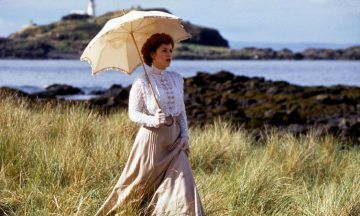Jennifer Egan in The Guardian:
 On its surface, The House of Mirth reads like a 19th-century novel. Although the 20th century’s defining technologies had all been invented by the time it was published in 1905, they had yet to substantially alter even the affluent world of the novel’s protagonist, Lily Bart. Cars were exotic playthings; telephones hadn’t supplanted visiting cards; electric light was a harsher alternative to candles. The first world war was inconceivable. And there is, too, a lingering 19th-century feel to Wharton’s disembodied approach to human physicality – especially striking in a novel whose central conundrum is sexual: Lily, a pedigreed virgin without fortune, craves the sensual pleasures of life among the very rich but cannot bring herself to marry a wealthy man, her only means of securing those pleasures for life.
On its surface, The House of Mirth reads like a 19th-century novel. Although the 20th century’s defining technologies had all been invented by the time it was published in 1905, they had yet to substantially alter even the affluent world of the novel’s protagonist, Lily Bart. Cars were exotic playthings; telephones hadn’t supplanted visiting cards; electric light was a harsher alternative to candles. The first world war was inconceivable. And there is, too, a lingering 19th-century feel to Wharton’s disembodied approach to human physicality – especially striking in a novel whose central conundrum is sexual: Lily, a pedigreed virgin without fortune, craves the sensual pleasures of life among the very rich but cannot bring herself to marry a wealthy man, her only means of securing those pleasures for life.
Where The House of Mirth is decidedly 20th century is in its frank depiction of the changing sexual mores around the behaviour of married women. Wives have begun to divorce their husbands. And married women like Lily’s nemesis, Bertha Dorset, can commit serial adultery with impunity so long as their husbands don’t make a fuss. Wharton lays out this rule explicitly: “The code of Lily’s world decreed that a woman’s husband should be the only judge of her conduct; she was technically above suspicion while she had the shelter of his approval, or even of his indifference.”
…Wharton had already written books including a novel set in 18th-century Italy and a volume on interior design when she began drafting a novel set in the rarefied world of moneyed New York. The challenge, she recalls in A Backward Glance, was to find the gravitas in such a world. “The answer was that a frivolous society can acquire dramatic significance only through what its frivolity destroys. Its tragic implication lies in its power of debasing people and ideals. The answer, in short, was my heroine, Lily Bart.”
More here.
